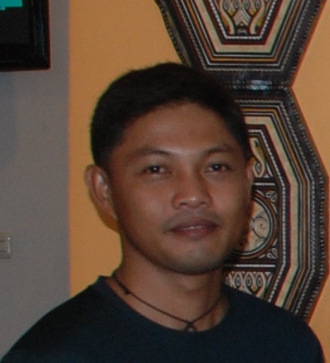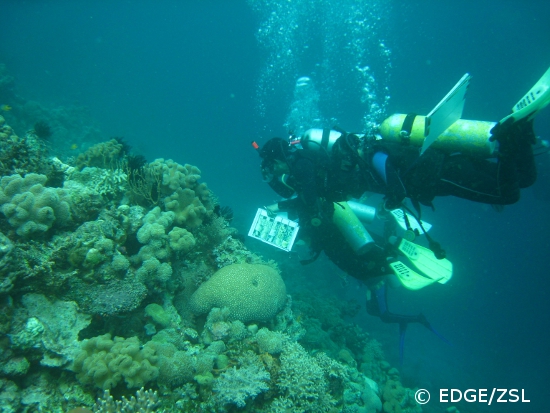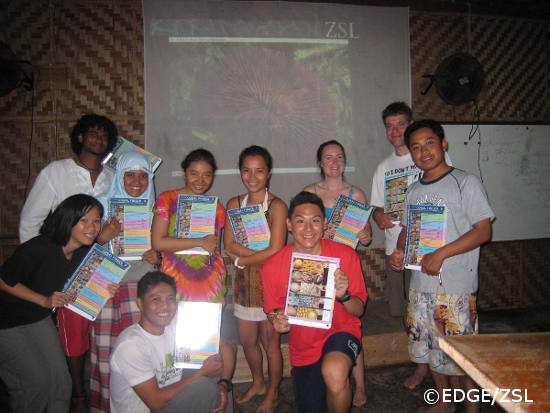The EDGE Corals Training Course began last week at Operation Wallacea’s field site in Hoga, Indonesia. The course is lead by Catherine Head EDGE Coral Reefs Co-ordinator, Dave Smith from Essex University Coral Reef Unit, and Bert Hoeksema from Naturalis Center of Biodiversity, Netherlands. To find out more about the course visit EDGE Coral Reefs Training Course.

I made it! Three countries, four days of travel including three airplane transfers, one bus ride and one ferry to reach Hoga Island in the Wakatobi National Marine Park in Indonesia. Thats a lot to process but, hey, Im here writing this blog in the lodge of the research station. We have been here three days and its been one awesome ride. Some may call it an adventure, with some comedy of errors in between. But as they say, this IS a once in a lifetime experience.
The trainees for the Evolutionary Distinct and Globally Endangered (EDGE) Coral Reef Field Course come from Indonesia, Malaysia and the Philippines, countries included within the Coral Triangle and considered to be one of the centers of marine biodiversity. There is Lely, Astrid and Andri from Indonesia, Sue, Chai Ming and Alvin from Malaysia, and Grace and me from Philippines. I met Alvin earlier on my flight from Kuala Lumpur to Makassar, as we were sitting next to each other. We all come from different backgrounds but we are all starting our careers in coral reef management. Some of us have just finished our graduate studies; some are working for non-government organizations and some working for the government.

Everybody was excited about our first official day and dive. I woke up at 5:30, still dark, and I was already itching to start the course. The minutes went by so slowly for breakfast to start, so I went from our house to the dining area with our group. I even finished my breakfast early and didnt wait for the Nasi Goreng to be served. I immediately went to the dive area, got my dive equipment and suited up.Then went to Buoy 2 for our checkout dive and refresher exercise with our dive master Andy.
We formally introduced ourselves to Bert, Catherine and Dave and our co-participants about our backgrounds, what were currently doing, and our interests are in coral reef research. We were also introduced to the different scientists and projects in Hoga Island. There were lots and lots of fascinating topics to pursue. My head was swarming with ideas that I couldn’t think straight let alone talk coherently with some of the scientists. It was one those times that really makes me giddy with excitement. I feel I can also do almost anything back home with all these expertise around me. Ahh, so many things, so little time.I got to have a chat with some of the people that were involve in the projects we were interested in.

We went to the wet lab of the research station to wet our appetite some more on the coral reef research we are going to do near the end of the course. We were introduced to the different researchers working on reef accretion, fish larvae settlement, and coral photosensitivity among others. We turned in our first worksheet on reef structure, factors influencing the diversity of forms and abundance of species as well as the different macro and microhabitats.
Im looking forward to tomorrow’s exercise as we are doing coral identification on the genus level on the solitary and free-living corals.